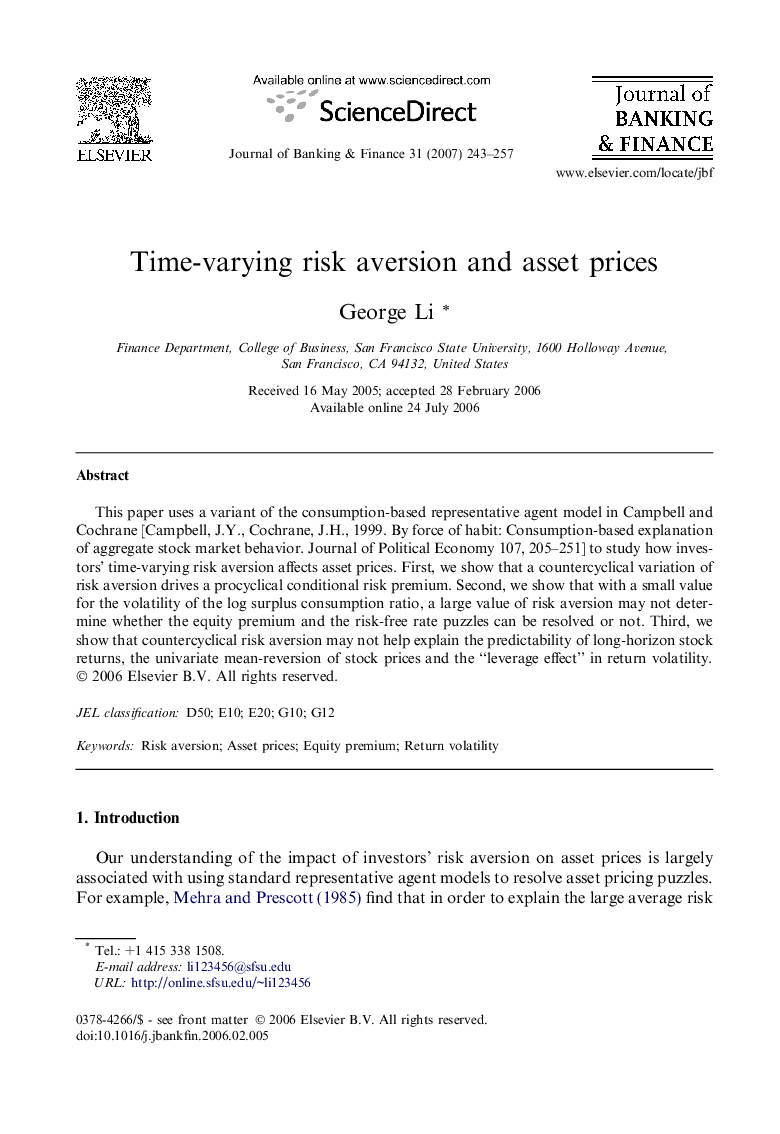| Article ID | Journal | Published Year | Pages | File Type |
|---|---|---|---|---|
| 5091404 | Journal of Banking & Finance | 2007 | 15 Pages |
Abstract
This paper uses a variant of the consumption-based representative agent model in Campbell and Cochrane [Campbell, J.Y., Cochrane, J.H., 1999. By force of habit: Consumption-based explanation of aggregate stock market behavior. Journal of Political Economy 107, 205-251] to study how investors' time-varying risk aversion affects asset prices. First, we show that a countercyclical variation of risk aversion drives a procyclical conditional risk premium. Second, we show that with a small value for the volatility of the log surplus consumption ratio, a large value of risk aversion may not determine whether the equity premium and the risk-free rate puzzles can be resolved or not. Third, we show that countercyclical risk aversion may not help explain the predictability of long-horizon stock returns, the univariate mean-reversion of stock prices and the “leverage effect” in return volatility.
Related Topics
Social Sciences and Humanities
Economics, Econometrics and Finance
Economics and Econometrics
Authors
George Li,
